Cornish Food And Drink In St Ives
Cornish Cream Tea
Ahhh the Cornish Cream Tea…we often hear that this is what guests are most looking forward to as they drive down the A30 to Cornwall. There is of course the big debate of cream or jam on first. The Cornish put jam on first then the cream whereas our neighbours in Devon put the cream on first. It’s been a debate so hotly talked about over the years, to find out more about the history of a Cornish cream tea and why serving it in the two different styles is so controversial, read more here.
There are many places in St Ives that you can get a Cornish Cream Tea, here are some places we would recommend:
- Olives Cafe
- The Yellow Canary
- Scoff Troff
- Chapels Cafe- Chapel Street
- Market Place Tea Rooms – Market Place
Fish and Chips
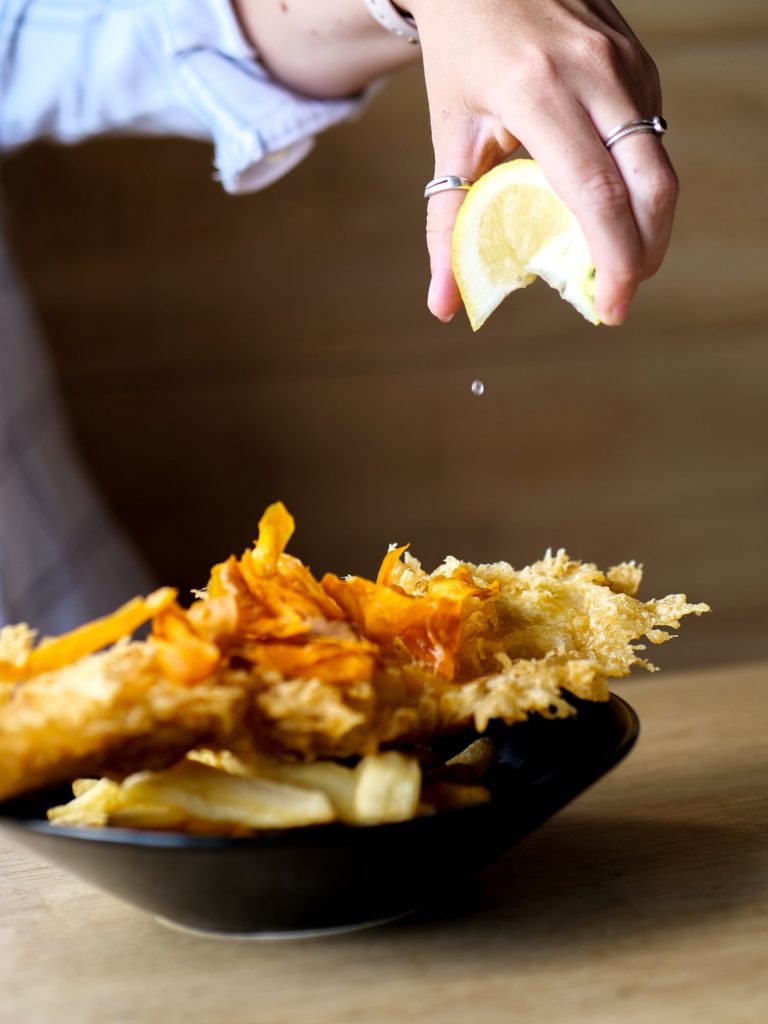
The staple Friday night dinner treat! Buy yourselves fish and chips from one of the takeaways in St Ives or Carbis Bay and you will not be disappointed. Our personal favourite is Sharkey’s located in Penbeagle Industrial Estate right opposite Matthew Steven’s fish merchants, so the fish is catch of the day fresh and the chips light, fluffy and moreish! Just a word of advice, most fish and chips takeaways close by 8pm so be sure to plan around that.
The best places to buy fish and chips in St Ives are:
- Sharkey’s Fish and Chips
- Harbour Fish and Chips
- The Balancing Eel (just off The Sloop Inn car park)
- Beck’s
Ice-cream
Cornish cows grazing on the lush coastal grass makes for delicious milk and even tastier ice-cream. The nearest ice-cream maker to St Ives is Moomaid from Zennor and they have an ice-cream parlour on Street-an-Pol but don’t worry if you can’t eat dairy, they have the most delicious dark chocolate sorbet that is ridiculously creamy.

We absolutely recommend you try ice-cream from each of these ice-cream parlours in and very near to St Ives. We have! The flavours are intense and the ice-cream (even Vegan options) are wonderfully smooth and creamy. My personal favourite is the mango sorbet and vegan chocolate ice-cream from Mr.B’s in Hayle – just amazing on a hot day!
- Moomaid of Zennor
- Willy Wallers
- Mr.B’s
- Valenti’s Ice Cream Work Shop – Fore Street
- Jus’ Desserts St Ives – Harbour front
Coffee
Like most food, drink and art in Cornwall, there is a beautiful story of craftsmanship and authenticity and it’s no different for coffee. Two such passions for coffee have been born in Cornwall and that’s Yallah and Origin Coffee.
Yallah’s ethos is all about sustainability and minimum impact on the environment. They work hard towards reducing their carbon footprint and reducing waste. They work hard to protect and nurture the communities where they buy their coffee and also at home in Cornwall. They roast really tasty coffee from their barn in Cornwall. They import their coffee by sail, providing financial traceability and buy specialty coffee direct and use 100% plastic-free packaging wherever possible (Yallah’s 250g bags can be recycled with household paper). Brilliantly, their roastery is powered by renewable energy. They have a Yallah hatch on the harbour front in St Ives where you can buy your coffee, take a seat on a bench very nearby and watch the comings and goings of the harbour and out to sea. Bliss.
Origin Coffee’s strapline is simple: for people who love coffee. They are a B Corp certified business meaning they are seriously committed to meet the global standards of social and environmental performance, transparency, and accountability. Transparency. Sustainability. Respect are their core values and have been at the heart of Origin from the very beginning. There’s no denying that their coffee flavours are intensely enjoyable too! The nearest Origin cafe is actually in Porthleven but it’s well worth the visit to their roastery where a glass wall between the cafe and the roastery means you get to see the mechanics behind coffee production up close. They have a car park outside, electric vehicle chargers and oh, delicious cakes and a fridge with tasty alcoholic and nonalcoholic drinks too!
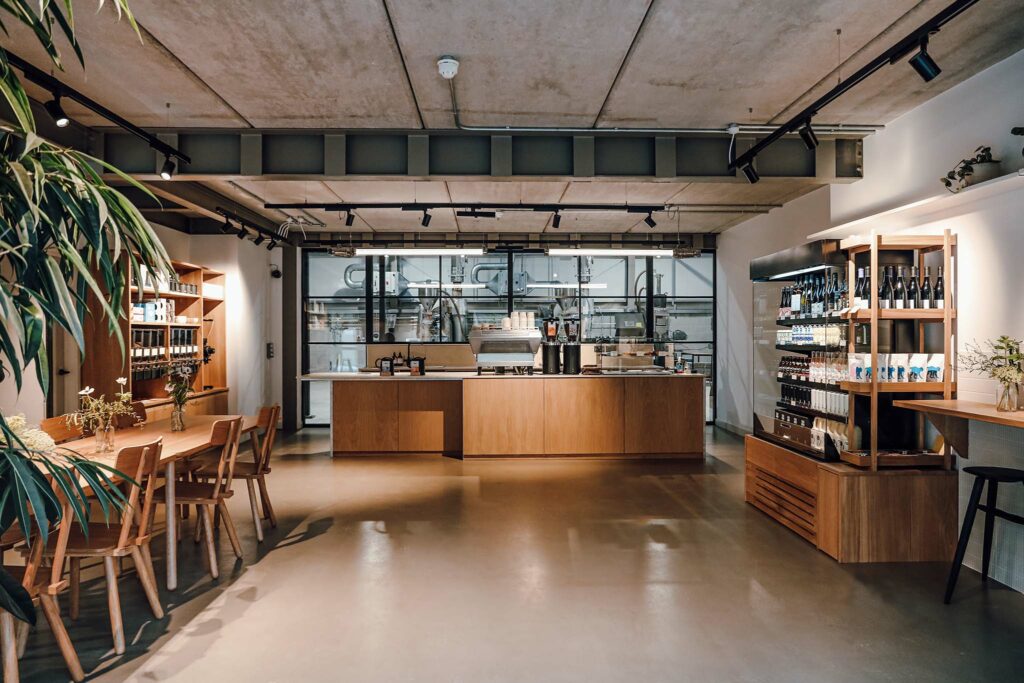
Cornish Pasty
Fun fact: The pasty is such a celebrated emblem for Cornwall that when the Cornish rugby team play a significant match a giant pasty is suspended above the bar before the game begins!
The Cornish pasty is taken so seriously that The Cornish Pasty Association was formed to protect the Cornish Pasty. Why would it need protecting you may ask? The Association has a European protected (PGI) status for the Cornish Pasty, which means that only pasties made in Cornwall, to a traditional recipe and manner can legally be called Cornish pasties. So don’t accept a ”Cornish” pasty if not made in Cornwall, it’s simply then just a pasty.
The history of the Cornish pasty dates right back to the 17th Century when Cornish tin miners wives would prepare an all-in-one meal to provide sustenance for their husband’s gruelling day down the dark, damp mines; working so deeply underground, it wasn’t possible for them to surface at lunchtime. A typical pasty is a filling of choice sealed within a circle of pastry, one edge crimped into a thick crust . Believe it or not, a good pasty could survive being dropped down a mine shaft! When eating their pasty, the miner would have very dirty hands so the the crust served as a means of holding the pasty without contaminating the meal. In tin mines, arsenic would be found within the ore they were mining so, to avoid arsenic poisoning, it was an essential part of the pasty. A life saving crust!
The traditional pasty filling is beef with potato, onion and swede, cooked together forming a rich gravy. However, meat was restrictively expensive for many in the 17th and 18th centuries so pasties traditionally contained much more vegetable than today. Back then, if a pasty was mainly carrot, it was the mark of an inferior pasty.
Pasty fillings can be as varied as your taste will take you. I have had a Thai Chicken Pasty before now from St Ives! As most things Cornish, there is much debate as to whether the ingredients should be mixed together before they are put in the pasty or lined up on the pastry in a certain order, with pastry partitions. They do agree on one thing though, and that is the meat should be chopped (not necessarily minced), the vegetables sliced and none should be cooked before they are sealed within the pastry. It is this that makes the Cornish pasty different from others.
It was so common a meal eaten by the miners that some mines had stoves down the mine shafts specifically to cook the raw pasties. And this is how the well known British rhyme “Oggie, Oggie, Oggie” came about. “Oggie” stems from “Hoggan”, Cornish for pasty and it was shouted down the mine shaft by the bal-maidens who were cooking the pasties, when they were ready for eating. In reply, the miners would shout “Oi, Oi, Oi!”
There are so many places that sell Cornish pasties in St Ives and nearby, but here is where we would recommend you get some for your supper or a quick takeaway meal while on the beach:
- The Cornish Bakery
- Cornish Bakehouse
- St Ives Bakery
- Hampsons of Hayle (my personal favourite)
- Philps Pasties
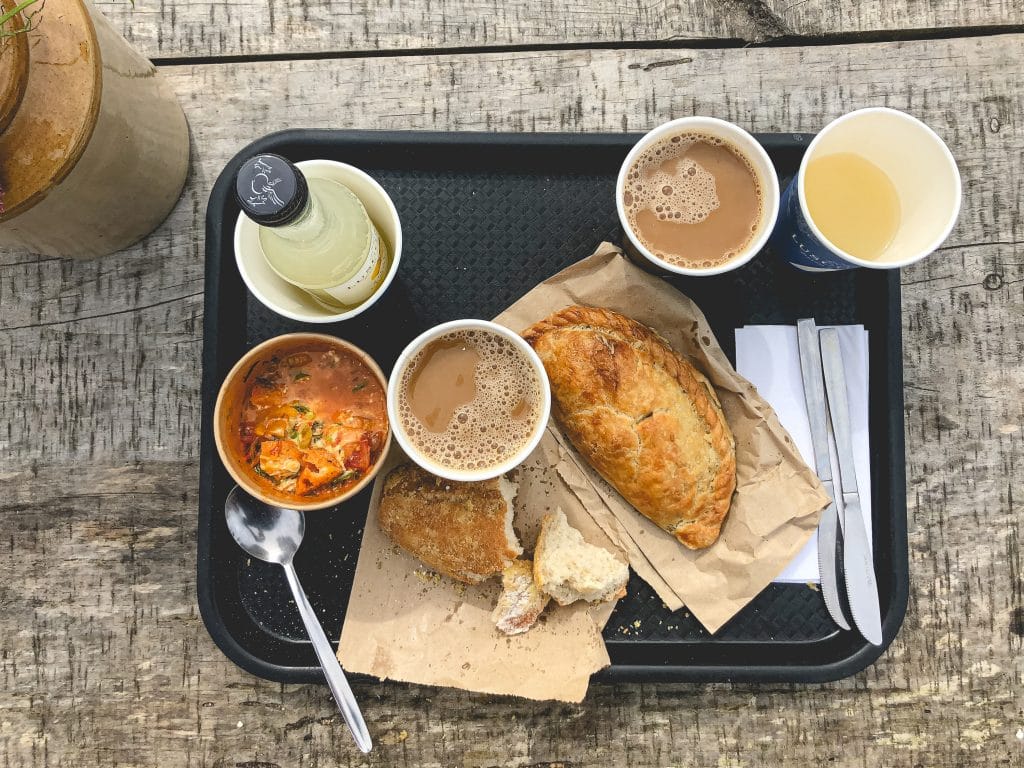
Hevva Cake
During the 17th and 18th centuries, the Cornish pilchard fishermen employed “huers”. These were men who would be based in a clifftop lookout and keep an eager eye out for shoals of fish near the coast. When they spotted a shoal, the huer would cry out “hevva,” this would be the que for fishermen to send out their boats and catch the fish! This is where Hevva Cake comes from. A traditional hevva cake is marked by a criss-cross pattern; a nod to the nets used by the Cornish fishermen. We are not sure who made the cakes originally, one storyteller claims that the huer would make them, while another says that the shouts of the huer would alert the fishermen’s wives to start baking. My guess would be the latter!
Many people would describe these pastries as the simplest cakes one could make. With no raising agent or egg, they are simply made from flour, lard (or more recently butter), currants, milk, salt, ginger, and cinnamon. But the cakes have a unique texture, which some describe as a cross between a cake and a crumbly biscuit. The cake’s flavour is fairly similar to Welsh cakes. In the past, hevva cakes would be made with lard, but the general consensus is that although modern ones are made with butter are less authentic, they do taste better!
We would recommend you get your Hevva Cake from The Makers on Chapel Street in St Ives. Here is a photo of one we enjoyed last week…
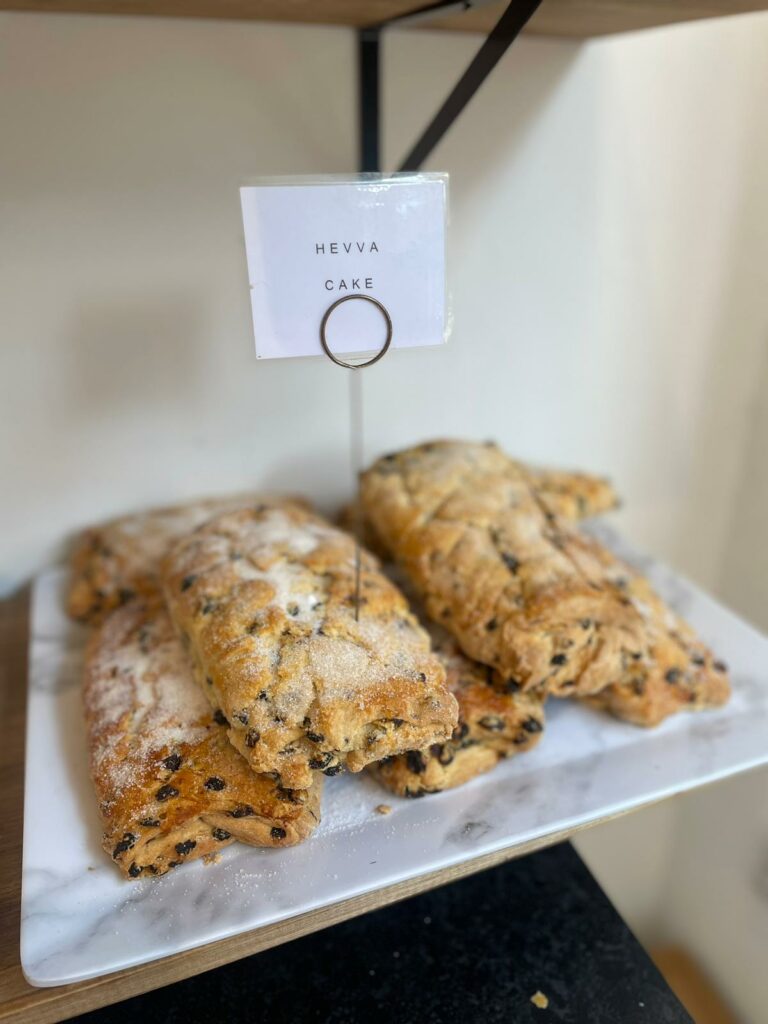
Sparkling White Wine & Cider
A 30-minute drive from St Ives will bring you to Polgoon. It is a piece of heaven where the owners worked on advice from Camel Valley and transformed a run-down flower farm into an award winning vineyard and orchard. The sparkling wine is light, fizzy and fruity and, if I may be so bold, far tastier than champagne. They have rose’, white wine, cider and juices which are all lovingly crafted from a small corner of West Cornwall. We recommend you head West from St Ives and take a tour around the vineyard or, at least visit their shop where you can pair your chosen wine with antipasti meats, bread, olives and local cheese.
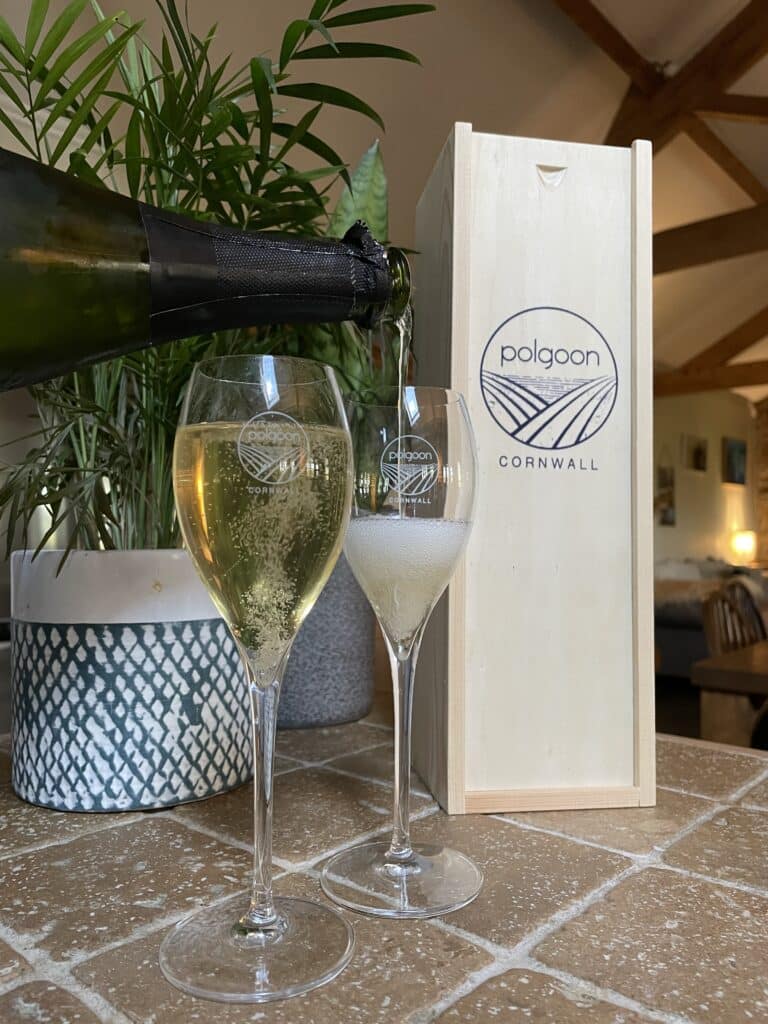
I hope the above food and drink photos and descriptions have whet your appetite and that when you book your next holiday to Cornwall and are cosied up in your holiday cottage in St Ives, you really do treat yourselves to Cornish food and drink that has been enjoyed by fisherman, miners and families in this county for centuries!
Article written by Sam Sheppard
For more suggestions on where to eat and drink, things to do and places to visit, check out Orange Roofs' Area Guides packed with ideas that will make planning your St Ives holidays a breeze.
